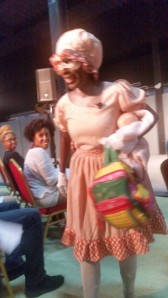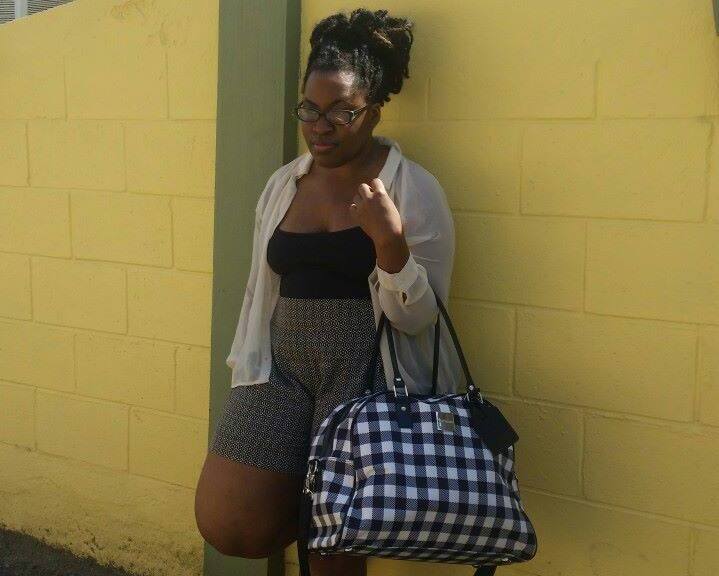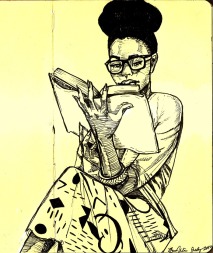I stepped out into the sweltering heat of Trinidad pleasingly shocked by how instant my emergence in the culture felt. I realized that the individuals that surrounded me all looked like me. However, they did not sound like me. I found it a little hard to understand the Trinidadian dialect, which is a fusion of proper English, Spanish, and French. As off-putting that was, my excitement grew as I begin to soak in the differences between this country and the United States.
One of the major differences was evident in the food. Trinidad and Tobago offer plenty of curried options, callaloo, rice, roti, doubles (my favorite), salted fish, shark, and several different tropical fruits. The traditional Trinidadian dishes included, but were not limited to blends of Indian, African, Creole influences. Interestingly, they have a KFC or Church’s Chicken fast food restaurant on nearly every corner. I didn’t realize until this trip how much beef is integrated into my diet. For most of our meals, we were offered curry chicken or some version of light flaky fish. I craved for a little more meat variety evident in my request for bacon during breakfast in Tobago. The waitress laughed and responded “American girls love bacon.” Though a funny comment, I began to think of some other things I would love to have that would be indicative to the perceptions of a privilege American.
Another distinction that was quite refreshing was the scenery. As we loaded the bus to head to the Normandie hotel, the background of Trinidad was overwhelmingly beautiful and humbling at the same time. There were lots of houses in an assortment of colors, shapes and sizes. They were beautifully dispersed through out the hills and valleys of Trinidad, with a few sky scrapers in the backdrop. This was absolutely breathtaking and a huge contrast to US suburbia, often uniformed in conformity. A lot of these houses and buildings in which our workshops took place were designed to allow for open air circulation. There would be these huge fans that were often times off. The heat was almost impossible. And of course there was no air conditioning. I think it is accurate to say that American girls also love air conditioning.

Understanding the African diaspora in Trinidad and Tobago was the main focus of the research tour. I have to say this was one of the most moving experience of my time in T&T. We had the opportunity to participate in Idekeda Group Workshop. This group introduced us to the African heritage in Trinidad and Tobago. They shared many of the songs, dances, and stories that were intrinsic to Afro-Trinbagonians. The workshop also contextualize Trinidadian staples such as the steelpan and calypso music. I definitely identified with this portion of the experience due to the common origin of African presence in the US. Afro-Trinbagonians reveled in securing their freedom and their independence. And maintaining that spirit. American girls love the underdog.

Another aspect of our trip was dedicated to understanding the origins of carnival and carnival characters. Carnival is the most significant event to occur in Trinidad attracting participants from all over the world. Carnival features calypso, Soca (a contemporary derivative of calypso), and the nation’s official instrument, the steelpan. I was most interested in the Baby Doll character. She would be dressed in a frilly or lacy garment, often wearing a bonnet. She would walk around carrying a white baby with blue eyes stopping male passers and accusing them of being the baby’s father. Uncovering the origins of carnival revealed that the babydoll character was a mocking statement at whites having babies with black women and then abandoning them. Many of the other traditional carnival characters grew more complexed as we learned more and more during the tour.
I have come to realize that celebration is homogenous in the twin islands, Trinidad and Tobago. The entire time I was in the tropical paradise, I celebrated T&T’s rich cultural identities that ranged from Afro to Indo-Trinbagonian. It was absolutely amazing. I know that I will miss the tropical climate, the biodiversity, and more importantly the rich people of Trinidad and Tobago. This American girl fell in love with with the people, where the culture of T&T dwells.


